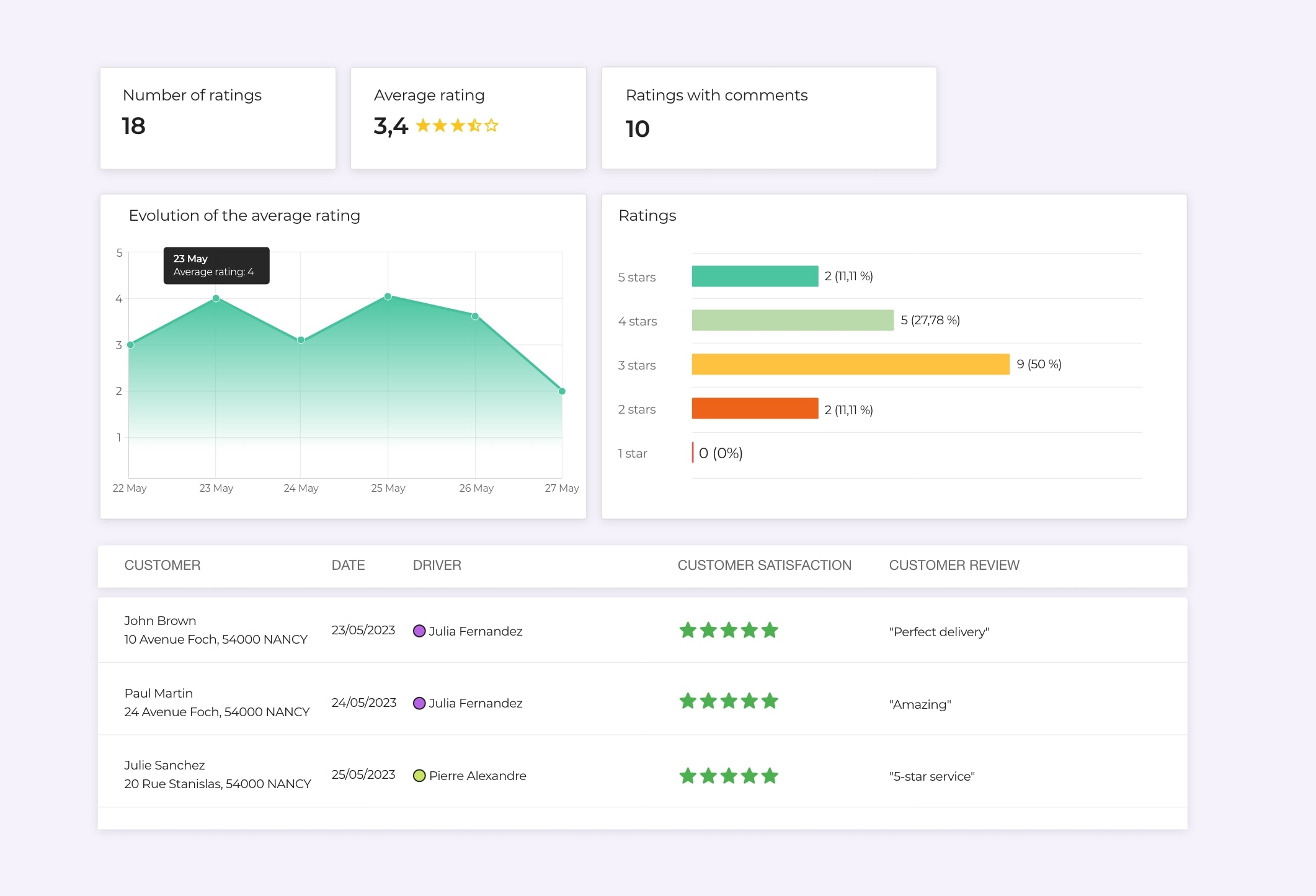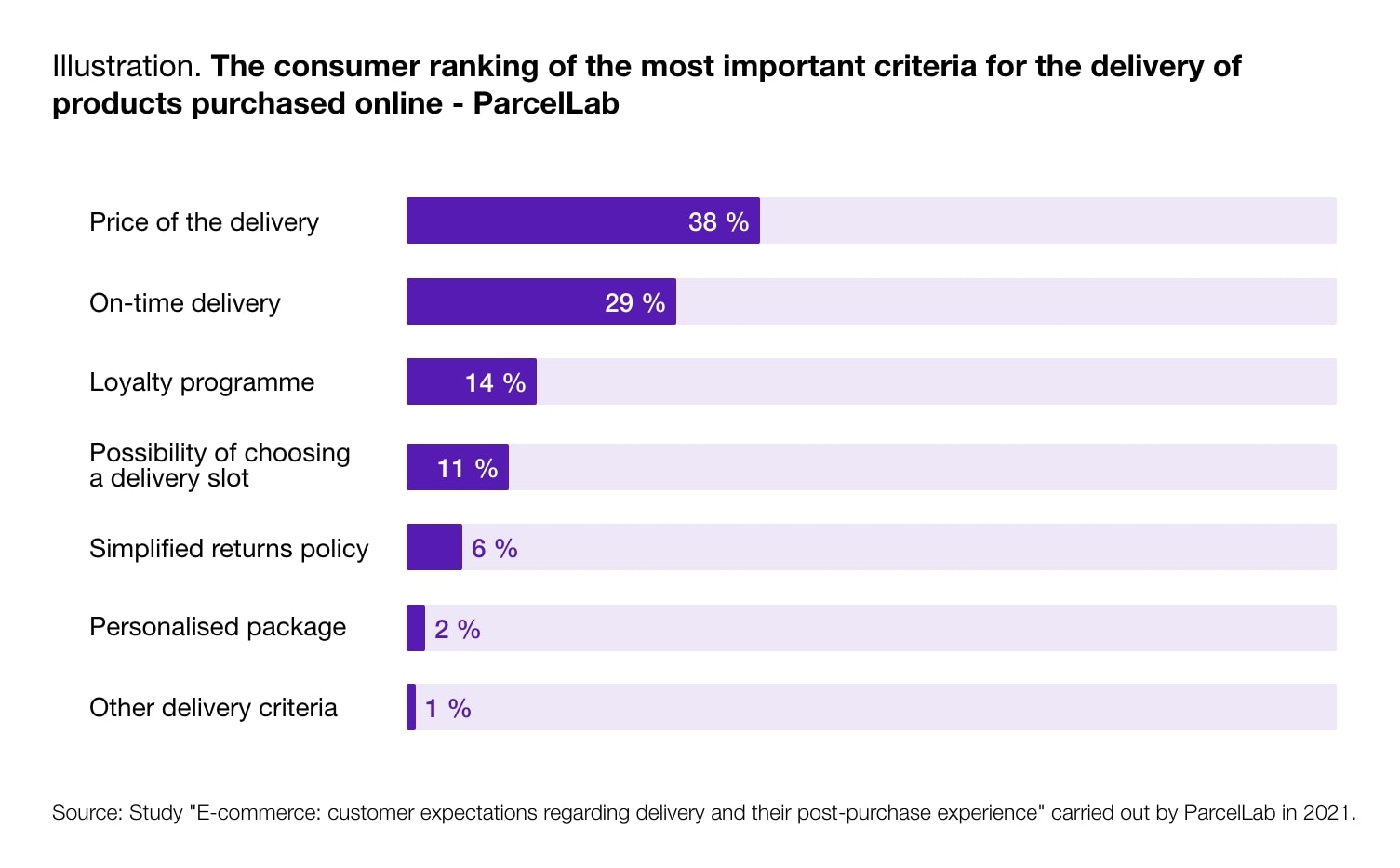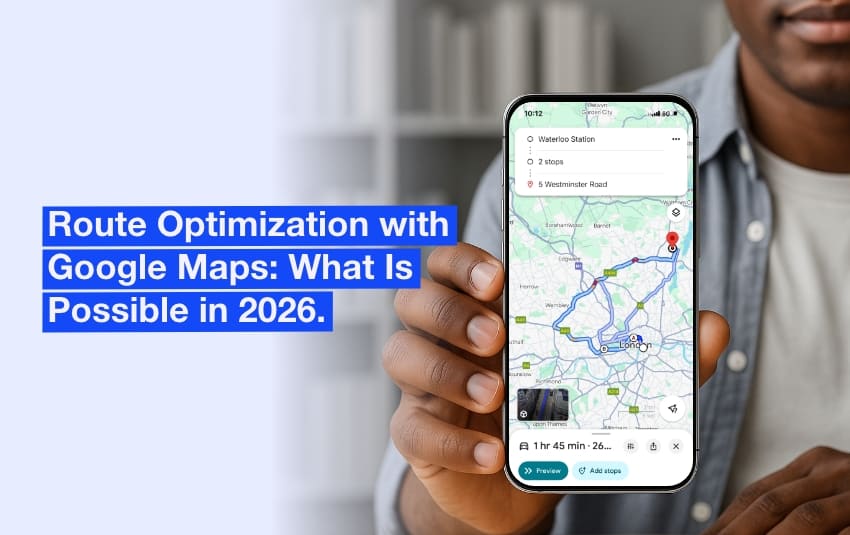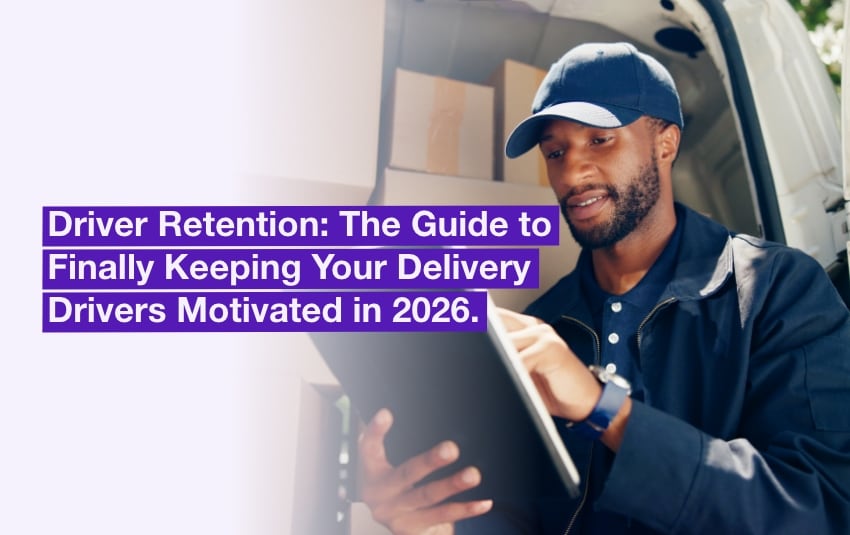How to provide a 5-star delivery experience to your customers?

A delivery issue has spoiled the shopping experience for 47% of customers over the last 12 months. This already surprising figure rises to 60% for consumers living in the Paris area. These statistics, taken from the Shopping Experience 2020 study, show the extent of the efforts that need to be made by carriers and retailers to ensure a successful post-purchase experience!
Delivery is the key moment that must not be missed to offer shoppers an experience that is as positive online as it is in-store. It is during delivery that the purchase becomes concrete for the consumer, and that you can build long-term loyalty.
AntsRoute has put together an 8-point guide to building a perfect delivery experience, which you can adapt to your marketing strategy and brand environment.
Table of contents
- Make delivery free under certain conditions
- Meet delivery deadlines
- Let customers choose between several delivery options
- Encourage customers to plan their delivery appointment online
- Set an effective communication strategy around delivery
- Choose packages that customers like
- Adopt a simplified returns policy
- Educate delivery drivers on the importance of their behaviour
Delivery is the key to offering shoppers a quality experience. To ensure the best possible delivery experience, transport professionals need to adapt their logistics strategy. Respecting delivery deadlines and letting customers choose among several delivery solutions will help build customer loyalty.
Make delivery free under certain conditions
Offering delivery can be dangerously unprofitable. The problem is even more sensitive if you sell products that are heavy, bulky, have low margins or require custom installation. Yet 73% of French people surveyed by OpinionWay cite the cost of delivery as an essential factor. The price of delivery is even the number one selection criterion for 38% of them.
Accustomed to the very advantageous conditions offered by leaders such as Amazon and Cdiscount, Internet users no longer hesitate to consult several sites to find the cheapest delivery. And even free delivery if they have the option!
There are a number of options available to you to meet buyers’ expectations without sacrificing your margins. For example, you can make delivery free:
- For purchases over a certain amount.
- For customers who are members of a loyalty programme.
- As part of one-off marketing operations, via promotional codes, etc.
Meet delivery deadlines
If an e-commerce site communicates a delivery date to its customers, common sense would expect delivery to be made on time. Between stock shortages and the inevitable logistics problems during the last mile, there are still too many complaints about late delivery. To prevent this type of setback, the safest option is of course to optimise your delivery routes in-house, using high-performance route management software such as AntsRoute.
With the AntsRoute application, for example, you can automatically inform your customers of the delivery date and time slot, by email or text message. In the event of delays or unforeseen events, the solution also calculates the new arrival time, before sending the information to the customer.
If in-house delivery management is not an option, take the time to compare the actual delivery times of each carrier, using various indicators:
- Percentage of parcels delivered on first presentation.
- Percentage of goods delivered late.
- The carrier compensation policy in the event of damaged or late-delivered parcels..
- Test orders carried out by you.
- Customer comments posted online, on review sites or social networks, etc.

AntsRoute re-optimises delivery routes in the event of unforeseen events.
Let customers choose between several delivery options
According to another study conducted in 2017 in the United States and 6 European countries for MetaPack, Internet users’ expectations are not limited to price or delivery times. Half of consumers are prepared to abandon a shopping basket if the delivery options displayed do not suit their needs. 60% of them are happy to click elsewhere to find more attractive delivery terms.
Today, almost all e-commerce sites offer these delivery options, which have become standard:
- Home delivery, the most convenient solution, has further gained in popularity as a result of the health crisis and the growing popularity of teleworking.
- For working people who are often away from home, picking up their parcels at a relay point, post office or secure locker is a popular option. They can pick up their parcel over a wide range of hours, without having to wait for the deliveryman, who can be quite annoying.
- In-store click & collect is an opportunity for retailers with a network of physical shops to promote synergies between the different sales channels.
In addition to the delivery methods already mentioned, new services popular with shoppers are emerging. For example, Internet users like to choose the logistics provider responsible for delivery. In rural and suburban areas in particular, the performance of carriers is highly variable, and customers are well aware of this.
Internet users are also increasingly demanding express delivery, even within an hour, even if it means paying more for the service. In major cities, more than half of them expect delivery within an hour, despite the logistics challenges involved in setting up such a solution.
Other popular delivery options include evening or weekend delivery, or ‘green’ delivery using an eco-responsible carrier or means of transport.

Delivery methods are multiplying.
Encourage customers to plan their delivery appointment online
Who has never winced at a text message announcing a delivery “between 8 a.m. and 2 p.m.”, or taken a day off work to receive an important purchase?
To avoid spoiling your customers’ post-purchase experience, there are reliable and effective IT solutions, such as route optimisation software. Thanks to powerful algorithms, you can propose one or more delivery slots to your customers in just a few seconds.
To do this, the planning software calculates the best days and time slots, scored according to the customer’s constraints and the geographical distribution of the mobile workers.
Another important advantage: by following a link sent by email or SMS, the consumer can validate or reschedule an appointment independently, without even having to contact the corporate customer service.
As a result, the buyer no longer has to wait at home for several hours. The company increases the quality of service and customer satisfaction, while limiting the number of kilometers traveled by the delivery drivers.
Surprisingly, only 9% of merchants offer these remote scheduling solutions to their customers. This is a very easy opportunity for build customer loyalty while simplifying the management of their time!

Sending a link via AntsRoute to reschedule a delivery.
Set an effective communication strategy around delivery
We sometimes forget it, but e-commerce has completely changed the chronology of purchases. Usually, the customer pays before even having the product in his hands. If you don’t offer a trial before purchase, you must reassure them by providing them with as much information as possible.
For example, the consumer expects to receive SMS or email notifications at every stage of the delivery process:
- Confirmation including the details of products purchased immediately after the transaction.
- Order preparation status.
- In case of error or stock shortage, clear announcement of new delivery time.
- Partial or full shipment of products.
- Delivery of the packages to the carrier.
- Notification when the delivery driver is on the way, etc.
However, even among the largest French e-tailers tested for the Shopping Experience study, more than a third do not communicate any estimated delivery date to their customers!
Some softwares allow to send a tracking link to the customer, so that he can follow in real time the progress of the parcel during the last mile. This is another very good practice to recommend.
Choose packages that customers like
The packaging, and more generally, the care taken in preparing the package, is another essential element to enhance the delivery.
Here are some suggestions of good practices found on social networks. Some buyers are indeed very happy to share their delivery experiences there, so much so that a new phenomenon has emerged: unpacking or unboxing videos.
- Choose a strong package that fits the size of the goods. The products must not move or be compressed.
- Favor eco-friendly, recyclable or reusable packaging.
- If possible, choose attractive packages that are pleasant to look at and to open. After all, isn’t the customer giving a gift to himself?
- Think about adding a thank-you note, samples, small goodies, etc. into the package.

Packages must be carefully prepared.
Adopt a simplified returns policy
For an online retailer, it can be tempting to make it difficult or impossible to return orders. Between the complex logistics involved and the labor costs, managing the returns process is very expensive.
Yet the lack of a simplified returns policy can cost much more!
According to the MetaPack study, 39% of consumers surveyed will no longer return to an online store if they have had a failed delivery experience. Even more embarrassing for brands: 43% publicly share their disappointment on social media, with that number rising to 48% among young adults.
In contrast, the very generous refund policy of retailers like Amazon is a very powerful loyalty driver. So many marketers are instead advocating measures to make returns easier, in order to turn the initial disappointment into a positive experience with the brand:
- Adding of a pre-printed return label in the package.
- Clear communication about return and refund terms.
- Easy-to-reach consumer service.
- Lower cost of returns, or even free for the customer.
- Multiplication of return channels: drop-off in post offices, in a parcel relay, pick-up of goods by a carrier, etc.
- Sending notifications to the customer when the return arrives at the warehouse and during its processing, etc.

Analysis of statistics regarding consumer reviews after a delivery.
Educate delivery drivers on the importance of their behaviour
In the world of e-commerce, delivery is often the only and final physical contact point with the customer. In other words, when a buyer opens his door to a deliveryman, the latter is automatically associated with your brand… for better or for worse. Can you imagine a careless and unhygienic delivery driver installing your latest washing machine? Instantly, you’ll wonder if it’s working properly, even after you’ve examined the product from every angle!
For many small and medium-sized companies, outsourcing logistics services is unfortunately the only possible solution, for geographical or economic reasons. But other companies, well aware of the major impact of the delivery process on their image, are betting on internalizing or re-internalizing these services. The path is narrow, especially as the recruitment and retention of delivery drivers is becoming increasingly complex.
However, for companies that take up the challenge, it is the best way to control the quality of the customer experience from A to Z.
For a successful delivery of goods, delivery workers must of course ensure that their behavior is impeccable. Greeting the customer, smiling, wearing clean clothes: these are all reflexes that may seem obvious. And yet…
Merchants who provide in-home installation services, for example, educate their delivery people on the right attitude to adopt:
- Carefully wipe off shoes when entering.
- Be personable and patient during setup.
- Answer consumer questions clearly and educationally.
- Take back empty boxes and plastic packaging when leaving, etc.
Is your company thinking about how to offer the best delivery experience to your customers, and thus widen the gap with your competitors? We offer you a free 7-day trial of our delivery management software, AntsRoute. The registration is done here, very simply, and you can even benefit from the assistance of our teams to quickly take advantage of our tool!
Free 7-day trial | No credit card required
Contenu
- Make delivery free under certain conditions
- Meet delivery deadlines
- Let customers choose between several delivery options
- Encourage customers to plan their delivery appointment online
- Set an effective communication strategy around delivery
- Choose packages that customers like
- Adopt a simplified returns policy
- Educate delivery drivers on the importance of their behaviour







